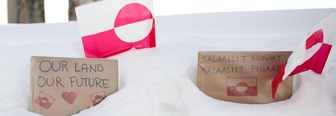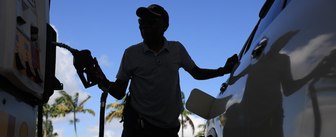Hydraulic fracturing — commonly called fracking — has been painted as a vital 2020 election issue for key electoral states that have long-depended on it for economic prosperity. Americans overall are more likely to oppose (44%) than support (35%) the drilling technique that allows energy companies to extract oil or gas from the ground, according to a YouGov Poll of more than 40,000 Americans.
President Donald Trump vastly expanded fracking allowances on public lands during his first term, reversing several Obama-era policies in the process. Now, with three weeks until the election, his administration has increased their claims in potential swing states that Democratic presidential nominee Joe Biden would ban fracking altogether — a policy that the vice president has opposed.
Large portions of Pennsylvania and Ohio – both key electoral states – sit atop the Marcellus shale formation, which is among the largest natural gas reservoirs in America. Each state allows energy companies to use fracking to extract the gas, and in both people are divided in their support for the practice – by 40/39% in Ohio and 41/41% in Pennsylvania.
Pennsylvania city dwellers are more likely to oppose fracking (by 51% to 28%), and those living in rural areas are more likely to support (by 51% to 32%). Two-thirds of Pennsylvania Democrats (66%) oppose fracking, while about seven in 10 Pennsylvania Republicans support it. Independents in the state split 35% in support, 43% in opposition.
Ohio falls similarly to its neighbor. Those living in rural parts of Ohio are more likely to support (49%) than oppose (33%) fracking, as are most Ohio Republicans (66% vs 17%). In contrast, Ohio Democrats oppose fracking by 61% to 17%, with and Ohioans living in cities opposing by a smaller margin of 45% to 30%.
Oil-producing states support fracking...
Several states that produce the most oil are more likely to support than oppose fracking, including North Dakota (63% support, 30% oppose), which sits atop the Bakken Shale formation alongside South Dakota (49% support, 37% oppose) and Montana (46% support, 43% oppose).
Other states that boast ample shale oil resources also tend to support the practice, including Texas (42% support, 39% oppose), Colorado (49% support, 42% oppose), and Utah (45% support, 35% oppose).
...while states with fracking bans oppose the practice
In 2012, Vermont became the first state to ban fracking. Perhaps unsurprisingly, eight years later, the practice is overwhelmingly unpopular in the state. Seven in 10 Vermonters oppose fracking (70%), while just 15% support it, and 15% are uncertain of their stance.
There is likewise strong opposition in New York (28% support, 50% oppose), Maryland (29% support, 53% oppose), and Washington state (31% support, 52% oppose), states which have also implemented state-level bans in recent years.
In 2019, Oregon Governor Kate Brown signed a bill temporarily banning fracking in the state until 2025. Most Oregon residents oppose fracking (54%) and just 33% support it. Most recently, California Governor Gavin Newsom proposed a measure to end new fracking permits in the state by 2024. The move is likely to be popular on the West Coast state — 52% of Californians oppose fracking while just 30% support it.
Tell your own story with data from YouGov. Contact uspress@yougov.com for more information about this dataset
Related: Americans are less likely to have friends of very different political opinions compared to 2016
Methodology: Total weighted sample size was 40,443 US Adults aged 18+. Participants were asked: “Do you support or oppose fracking in the United States?” The response options were: strongly support, somewhat support, somewhat oppose, strongly oppose, don’t know.” The survey was conducted between October 2019 and October 2020. The responding sample is weighted to provide a representative sample of the United States.
There were 3456 people surveyed from California, 2601 people from Texas, 1961 people from Pennsylvania, 1948 people from New York, 1512 people from Ohio, 1102 from Washington, 792 from Colorado, 784 from Oregon, 648 from Maryland, 330 from Utah, 256 from West Virginia, 166 people from Montana, 121 people from South Dakota, 107 people from Vermont, and 98 people from North Dakota. The sample is weighted to provide a representative sample of the United States.
Image: Getty











